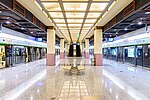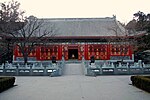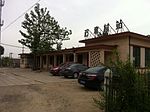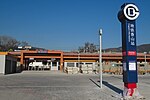Wenquan, Beijing
Areas of BeijingHaidian DistrictTowns in Beijing

Wenquan Area (Chinese: 温泉地区; pinyin: Wēnquán Dìqū) is an area and a town on the west of Haidian District, Beijing, China. It borders Xibeiwan Town in its east, Xiangshan Subdistrict in its southeast, Junzhuang Town in its southwest, and Sujiatuo Town in its west and north. The population was 69,165 as of 2020.The name Wenquan (Chinese: 温泉; lit. 'Hot Spring') refers to a hotspring in north of Tangzi Mountain within the region.
Excerpt from the Wikipedia article Wenquan, Beijing (License: CC BY-SA 3.0, Authors, Images).Wenquan, Beijing
显龙山路, Haidian District
Geographical coordinates (GPS) Address Nearby Places Show on map
Geographical coordinates (GPS)
| Latitude | Longitude |
|---|---|
| N 40.0475 ° | E 116.17444444444 ° |
Address
显龙山路
显龙山路
Haidian District
Beijing, China
Open on Google Maps










